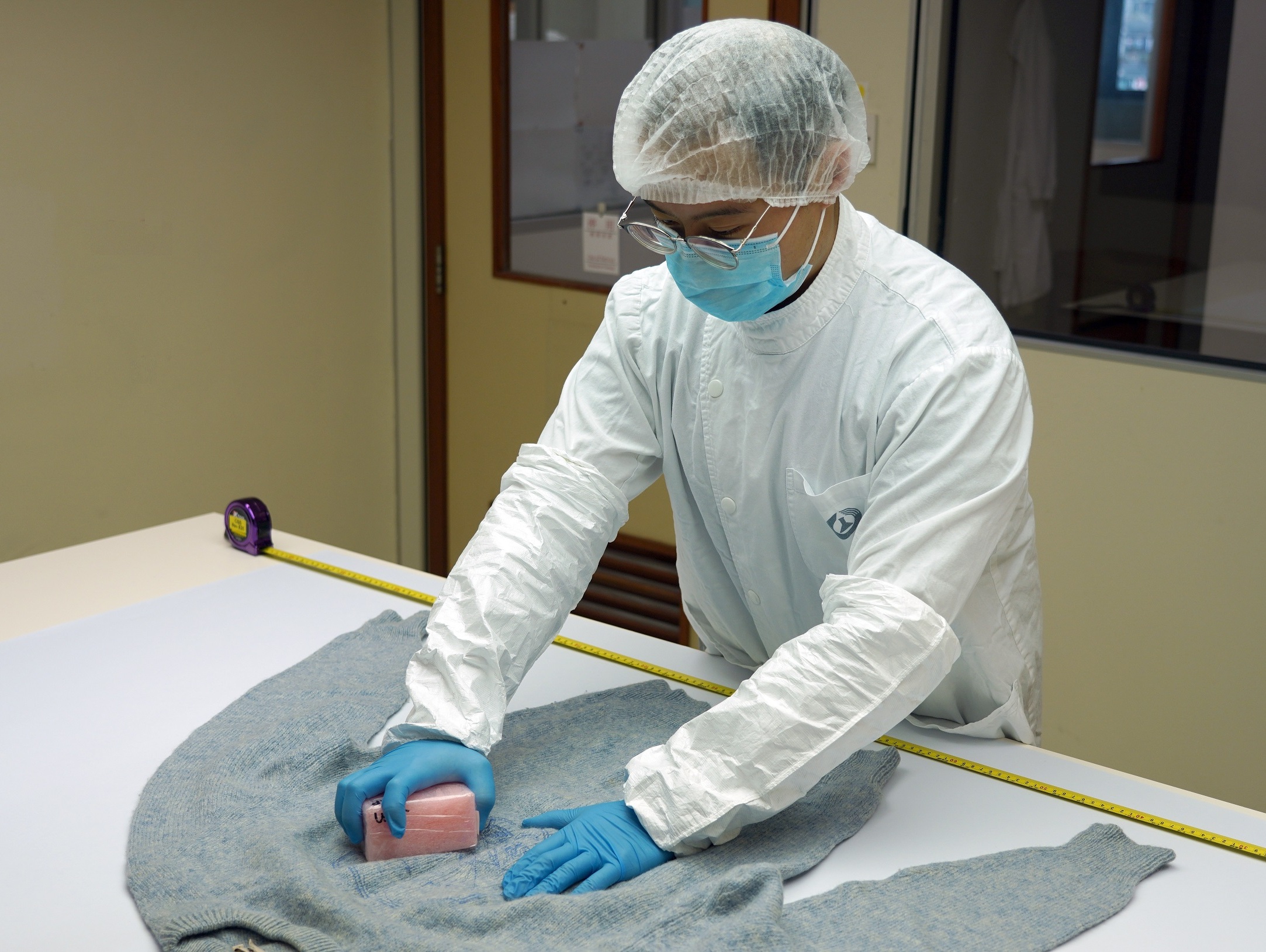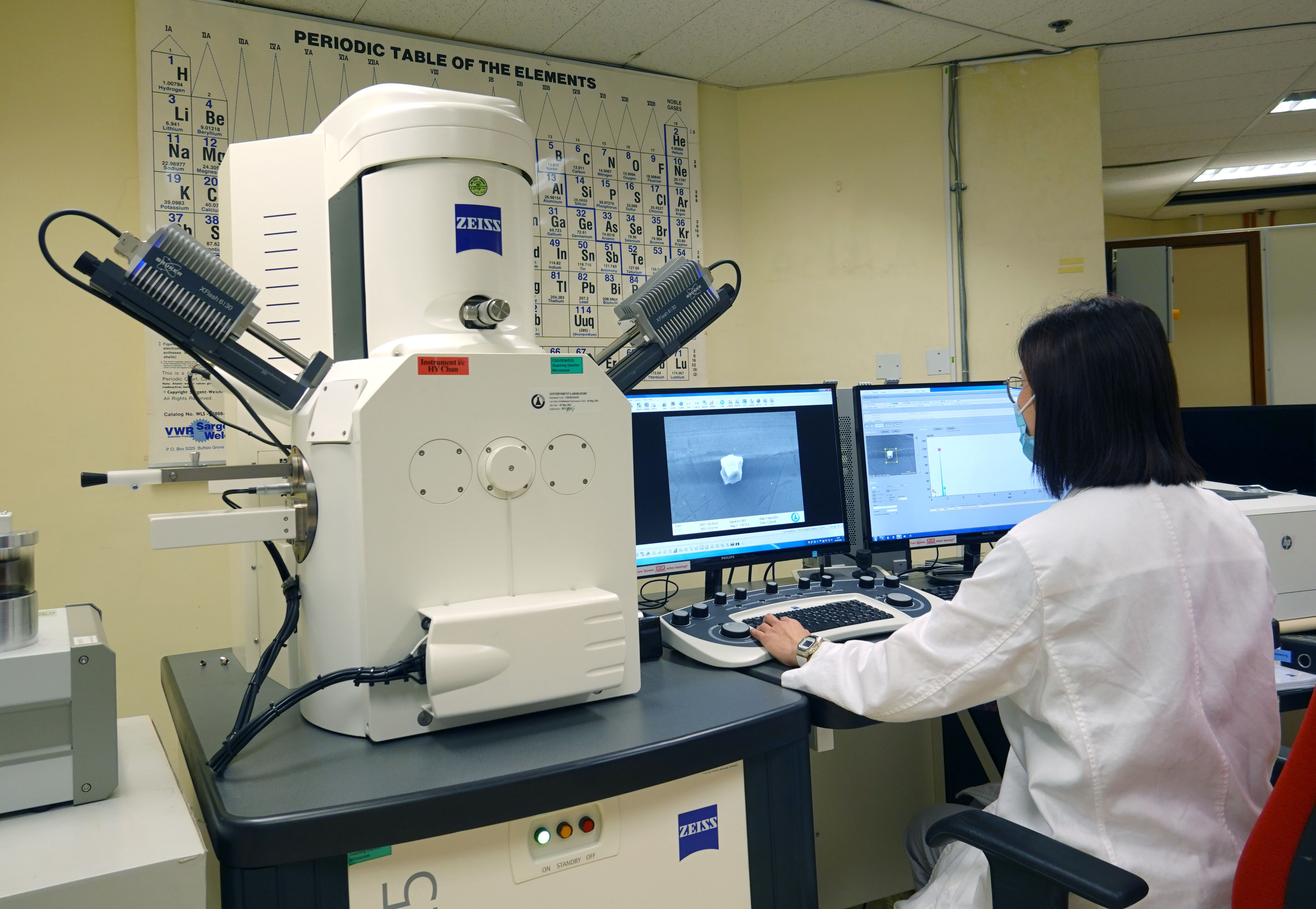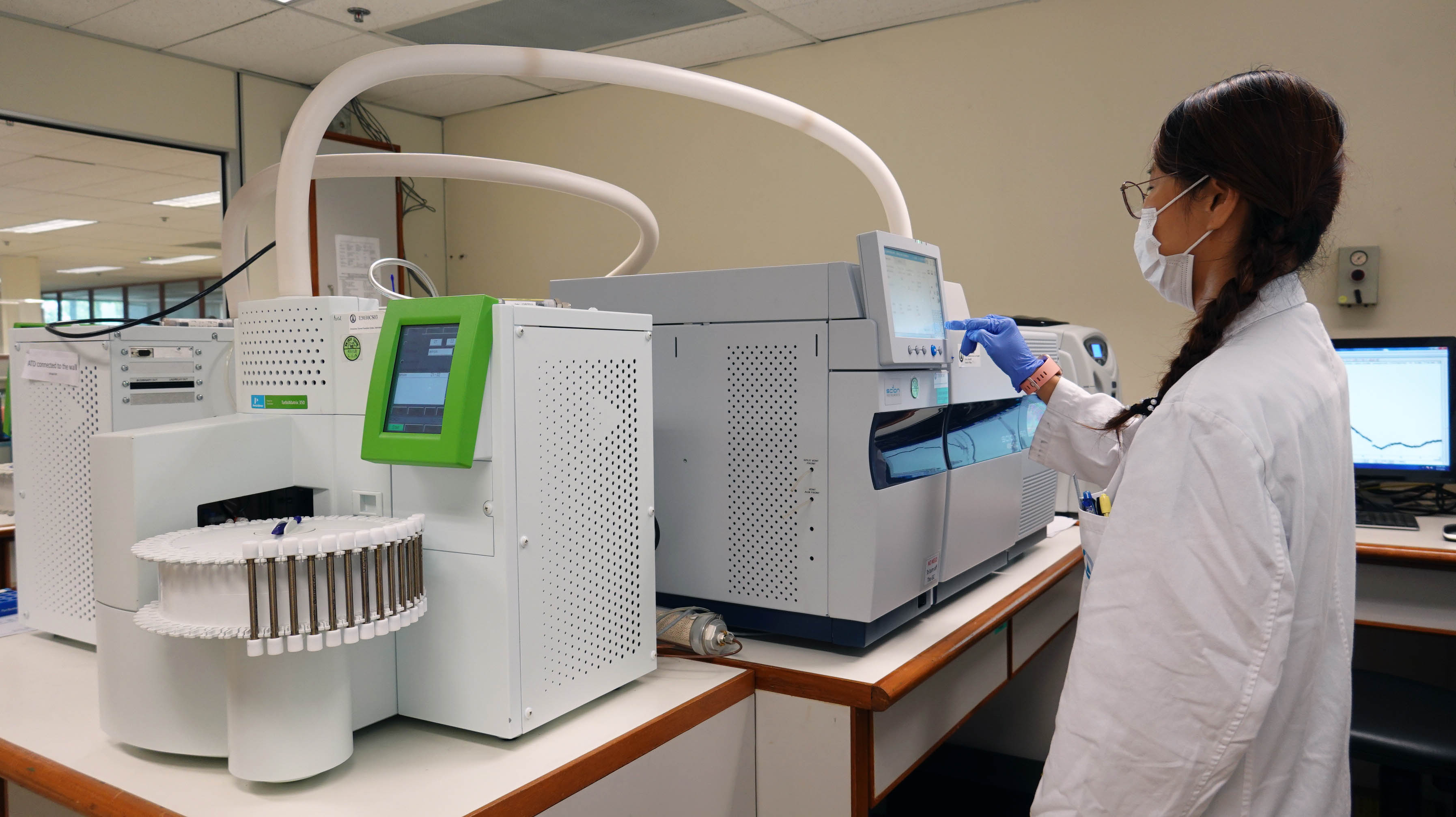Chemical Sciences Section
The Chemical Sciences Section deals with a wide variety of cases, with particular emphasis on offences against the person and against property. The work of the section is covering from miscellaneous chemical investigation to trace evidence examination. In addition to laboratory work, the professional staff of the section are also responsible for attending suspicious fire scenes to establish the cause of fire.
The section provides chemical testing services for a wide range of substances, such as ignitable liquids or their residues related to suspected arson cases, noxious or corrosive substances involved wounding cases, as well as liquor analysis for unlicensed selling or alcoholic beverage. Therefore, the section equipped with a wide range of instruments for efficient testing services. Trace evidence examination is also a major responsibility of the section. This area of work includes the examination of such trace materials as textile fibres, glass, paint and soil, which is labor-intensive and painstaking. Although costly in terms of manpower and working time, trace evidence frequently plays a major part in the evidence produced in major crime investigations, justifying the input and commitment apportioned to it.

Preservation of Fibre contact evidence

Scanning electron microscope

Automatic Thermal desorption – gas chromatograph – mass spectrometer
Key Instruments
Key instruments in the section :
- Automatic thermal desorption — gas chromatograph — mass spectrometer
- Fourier transform infrared — microscope
- GRIM3 Glass refractive index measurement system
- Scanning electron microscope with energy dispersive detector
Targets and Key Indicators
Key Performance Measures Relating to the Forensic Science Services
Targets
Targets are defined as the percentage of completed cases whose individual case-completion time does not exceed a specified number of working day(s).
